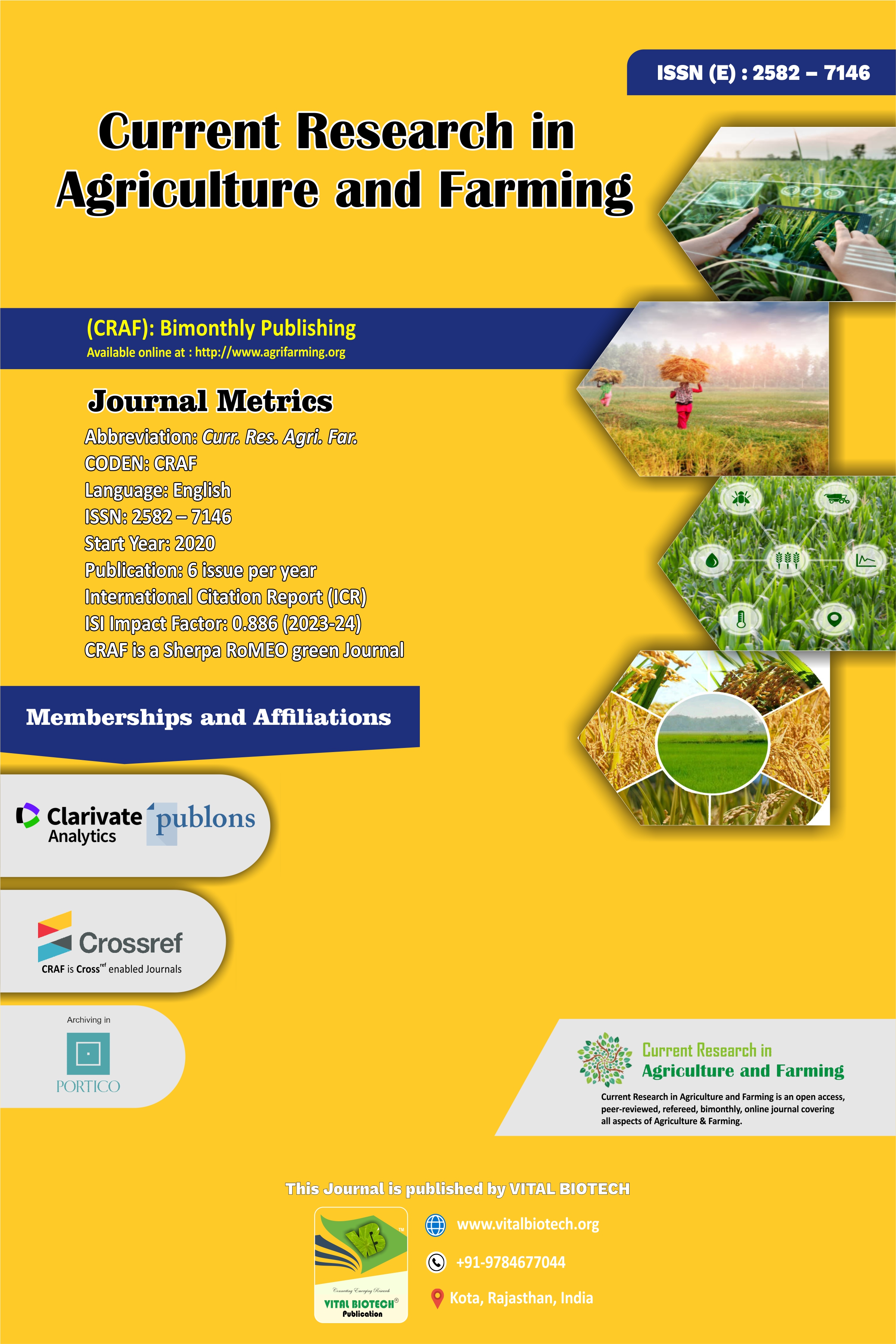

Current Research in Agriculture and Farming (CRAF)
Year : 2024, Volume : 5, Issue : 5
First page : (1) Last page : (5)
Article doi: : http://dx.doi.org/10.18782/2582-7146.225
Ram Sawrup Banga, Anurag Malik*, Lovejeet Singh, Tajinder Singh, Vishwas Deep and Gurmeet Kaur
Department of Agriculture, Bhai Gurdas Degree College, Sangrur, Punjab, India
*Corresponding Author E-mail: anuragmalikhau@gmail.com
Received: 3.09.2024 | Revised: 19.10.2024 | Accepted: 26.10.2024
ABSTRACT
Two winter (rabi) seasons in a row (2022–23 & 2023-24) saw the Department of Agriculture at Bhai Gurdas Degree College in Sangrur, Punjab, India, execute a field experiment. Three hydrogel levels—2.5, 5.0, and 0 kg/ha—were maintained in the main plots of the experiment, while five foliar nutrition levels—water spray, 2% urea, thiourea 500 ppm, salicylic acid 75 ppm, and NPK (19:19:19) @ 0.5 percent—were maintained in the subplots. Before planting lentils in designated strips, hydrogel was drilled 7–8 cm deep into the ground. Foliar nutrition was then sprayed on the plants at crucial times, such as during the commencement of the bloom and the development of the pod. The maximum B: C ratio (1.41) was obtained with hydrogel 2.5 kg/ha being on par with hydrogel 5.0 kg/ha over no hydrogel. The results showed that drilling of hydrogel 5.0 kg/ha before sowing recorded significantly higher pods/plant (66.5), grain yield (1210 kg/ha), and net return (Rs. 27507/ha) over control and 2.5 kg/ha, respectively. Foliar treatment of NPK (19:19:19) @ 0.5% during the stages of pod development and flower initiation resulted in significantly greater grain output (1127 kg/ha), net return (Rs. 26646/ha), and pods/plant (63.2) than water spray and urea 2%, respectively.
Keywords: salicylic acid, urea, hydrogel, productivity, and foliar nutrition.
Full Text : PDF; Journal doi : http://dx.doi.org/10.18782
Cite this article: Banga, R. S., Malik, A., Singh, L., Singh, T., Deep, V., & Kaur, G. (2024). Impact of foliar nutrition sprays and hydrogel on lentil yield and profitability in Sangrur, Punjab Region, Curr. Rese. Agri. Far. 5(5), 1-5. doi: http://dx.doi.org/10.18782/2582-7146.225

